- Administrator
- Albums and Singles
 Liturgy's music is a full-on sensory assault, at once controlled and chaotic, meditative and brutal, that demands you immerse yourself fully and pay attention. This is not background listening of any sort, nor easy listening—just an hour of damn good metal.
Liturgy's music is a full-on sensory assault, at once controlled and chaotic, meditative and brutal, that demands you immerse yourself fully and pay attention. This is not background listening of any sort, nor easy listening—just an hour of damn good metal.
Liturgy are a polarizing band. They play a brand of self-described "transcendental black metal," complete with an accompanying manifesto and philosophy, that may find them stuck between audiences—too self-righteous for devoted metalheads, too extreme for run-of-the-mill indie music fans. A glance around Internet forums finds that the band inspires a surprising amount of hatred (e.g., "They're a bunch of posers who just mindlessly regurgitate any philosophical bullshit they can find about black metal") for four regular guys immersed in their craft. So blindingly intense is their live presence that, when I saw them launch furiously into "High Gold" at a hole-in-the-wall bar at Austin's South by Southwest music festival a couple months ago, several folks walked out within seconds, perhaps overwhelmed by the density of sound.
All of which is to say that Aesthethica, Liturgy's second full-length, is a modern metal classic of the best sort: an album so blazingly artistic, recorded by a band so outspoken in its ideals, that it isolates many potential listeners before they've even heard a note. Aesthethica is full of contradictions: primal rock 'n' roll music that is rooted in black metal and hardcore, but isn't contained by the boundaries of either genre. Originally a solo project of cherub-faced frontman Hunter Hunt-Hendrix, Liturgy's membership now runs four deep—the antithesis of some depressed bum in corpsepaint—and Aesthethica sounds like a collaborative project that couldn't have been made by fewer people. Its songs are complex, sweeping, elaborately arranged, played by technically gifted musicians, energetic but never flashy.
So, Aesthethica draws from black metal: there are howling vocals, blastbeats and blindingly fast tremolo picking all over the album. The influence of hardcore music is also apparent in the intensity of these songs. Compositionally, though, Liturgy take a left turn into minimalist, avant-garde territory reminiscent of Glenn Branca's '70s experiments with droning repetition. The drumming flirts with cascading, jazzy fills that bounce off the walls of guitars, like a prism dispersing light. All sorts of interludes are present, too; the ritualistic, a capella chanting of "True Will" and "Glass Earth" are standouts. Most abrasive is "Helix Skull," a barrage of dissonant harmonics that opens the album's second half, serving as a break from the trance-inducing assault that dominates the album. At its best, Aesthethica is beautifully uplifting, a tidal wave of energy and repetition that, played at length, becomes hypnotic, romantic... even transcendental.
Great musicians know to end great albums on a strong note, and Liturgy save their best tune for last. After parting the heavens with "Glass Earth," dropping the listener's guard, "Harmonia" rains down a final, concentrated blast of ecstatic self-exorcism. Heard as a unified whole, Aesthethica is shockingly good, among my favorite albums this year. If it doesn't connect with every person that gives it a spin, it is perhaps all the sweeter for it—consider me converted.
Samples:
Read More
- Administrator
- Albums and Singles

Feasting With Panthers is a collaboration between Marc Almond and composer Michael Cashmore setting poems of Count Eric Stenbock plus unique translations by celebrated poet Jeremy Reed of poems by Jean Genet, Rimbaud, Paul Verlaine - as well as Reed's own poetry - to music. 'Decadent' poems of thwarted love, ill-fated romance, decadence and death are woven with homo-eroticism and laced with opium and are accompanied by Michael Cashmore's haunting and melancholic music that gives the verses a feeling of yearning for beauty and a longing for a lost innocence and youth.
The album was recorded over several years sending music files by e-mail and post, the artists never once recording together in the studio: Berlin based Michael Cashmore working at home to compose the music, playing all of the instruments and adding Marc's vocals from files recorded in London. The result is a glorious union, both in voice and music, complementing the texts.
The project began after Current 93's David Tibet gave Marc a book of poems by the Baltic German poet Count Stanislaus Eric Stenbock that he had published through the Durtro label . Marc was instantly attracted to the dark erotic and melancholic yearning in the verse and contacted Michael Cashmore who he had previously worked with on Current 93's reading of Idumea. He felt Michael would have the right understanding of the verse with his intricate, beautiful musical compositions. From this, the project developed to include many of Marc's favourite poems by some of his favourite 'outsider' poets with common ground.
Marc and Michael released a limited edition of Stenbock's 'Gabriel and The Lunatic Lover' through Durtro and performed both songs at The Queen Elizabeth Hall in London with Current 93 (see YouTube) in 2008. The complete album is now released through Cherry Red/ Strike Force Entertainment.
The Thief And The Night / Sonnet XI / Boy Ceasar / The Lunatic Lover / Crime Of Love / The Sleeper In The Valley / The Song Of The Unwept Tear / Patron Saint Of Lipstick / Gabriel / El Desdichado / Hotel De France And Poetry / The Man Condemned To Death / Feasting With Panthers
RELEASED 6th OF JUNE 2011
sfe015 (Cherry Red / Strike Force Entertainment)
Read More
- Administrator
- Albums and Singles
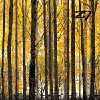 27 is a small band. There are two numbers in the name and three people in the group. Brittle Divinity, their latest full length, is appropriately enough a small record. Their last outing, 2007's Holding on for Brighter Days was bigger and broader, more produced and more varied than what they are doing here. But I like this better.
27 is a small band. There are two numbers in the name and three people in the group. Brittle Divinity, their latest full length, is appropriately enough a small record. Their last outing, 2007's Holding on for Brighter Days was bigger and broader, more produced and more varied than what they are doing here. But I like this better.
Reproductive
The album's second song, "Sometime Somewhere Soon" is beautiful and wistful and it's composed of not much more than voices, bass, and some simple keys. "Love Letter" is similarly sparse filled with more space than sound. The emptiness between notes makes the reading of a love letter seem almost sinister, turning a song that could come across as precious into something darkly longing. When the band does air it out (briefly, at the end of "Sacred Scars,") it gives the album some well-earned weight as if everything had been leading up to one big, fuzzy crescendo.
But when "Sacred Scars" is over, there's still three quarters of an album to go, and it never gets loud again. The synth work is more of a focal point here than on some of 27's older material, but it also blends together better with the rest of the instruments. Any song might be based on a guitar riff or a piano figure or a couple of chords on a Rhodes, but they all convene nicely because the record never leaves that intimate space created by small arrangements.
There is something to be said for making a small, focused record even when the means to experiment and go bigger are available. Brittle Divinity is that rare kind of record that sounds like a personal audience with the band rather than a carefully-produced and manufactured experience. Both have their place, but 27 sounds best like this.
My favorite song, "Man on Wire," displays a bit of lyrical genius by using Phillipe Petit's World Trade Center high wire stunt (documented in the wonderful film of the same title,) as a metaphor for a precarious relationship. I loved the movie and it even delved into Petit's love life, but I never would have made the connection between the act of walking across a high wire and that treacherous act of trying to connect with someone else who seems relatively close, but perilously difficult to reach. It's brilliant.
Samples:
 
 
Read More
- Administrator
- Albums and Singles
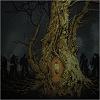 After so much hype, the long awaited collaboration between Sunn O))) and Boris was bound to disappoint. It starts off amazingly but overall there is something missing from the album. With 17 different musicians contributing a few of the pieces get too muddled and everyone finishes the album a bit lost. In the end it is a great idea that doesn’t quite work.
After so much hype, the long awaited collaboration between Sunn O))) and Boris was bound to disappoint. It starts off amazingly but overall there is something missing from the album. With 17 different musicians contributing a few of the pieces get too muddled and everyone finishes the album a bit lost. In the end it is a great idea that doesn’t quite work.
Southern Lord
Opening the beautiful sleeve and starting the disc, the roar of “Etna” provides an awesome beginning to Altar. A powerful drone that is encapsulates both the amplifier worship of Boris and of Sunn O))), it is a promising start to the album to say the least. This continues nicely into “N.L.T.,” where everyone bar Boris’ Atsuo and Sunn O)))’s Bill Herzog takes a break. Atsuo’s bowed cymbal and gong lead to many wonderfully sharp sounding noises while Herzog makes low, metallic groans using his upright bass. The album then peaks with “The Sinking Belle (Blue Sheep)” which sees the two bands plus guests get all introspective and soppy. Stephen O’Malley swaps his amps for a piano and the rest of the players turn down the volume. Jesse Sykes sings in a croak full of sadness. This song is worth getting Altar for alone. At eight minutes it’s far too short, Boris bring the lighter parts of their Pink album to the table and Sunn O))) shockingly add to the melodies with subtle beauty.
The latter half of the album alas isn’t as good as the first. Joe Preston appears on “Akuma No Kuma,” a vocoder and synthesiser led piece that sounds like Preston’s project Thrones but not as good. Once past the novelty of Greg Anderson and O’Malley using synths it became clear that what they are doing with the synths isn’t especially good. Atsuo’s drumming and Preston’s vocals are nice but not strong enough to keep the momentum of the song going. What follows “The Sinking Belle” is a real let down. The first three pieces build up to such a high point and then it just drops clumsily. It takes some time for the album to get back on track; only towards the end of “Fried Eagle Mind” does it start to engage me again. Unfortunately it’s too little, too late as the rest of the album lacks the fire that burned so strong before. These last few pieces highlight the dangers of working with too many guest musicians: there are too many ideas being poorly executed that could have worked better with fewer cooks.
The first 5000 copies on CD (and all copies on vinyl) come with a bonus disc featuring a 28 minute drone called “Her Lips were Wet with Venom (satanoscillatemymetallicsonatas).” Dylan Carlson from Earth plays guitar on it so I had high hopes for it, here is three of my favourite bands hopefully making the record that some online shops make legends about (have a Google for Reserve Not Yet Met by the three bands). With the crash of a gong and guitars sounding like a concerto of jet turbines my hopes were met. The various musicians add their own stamp to different parts of the piece; Wata’s screaming lead guitar is as powerful as always and Carlson’s country twanging sounds like the eye of a droning hurricane. It took a few listens to fully appreciate “Her Lips Were Wet with Venom” but it has revealed itself as a mighty beast.
One of the main problems I have with Altar is how little presence Sunn O))) have on it. The primitive and unholy rituals from their own albums and live shows are almost completely absent. Granted there are massive drones but very little in the way of riffing. Altar to me is more accurately described as a Boris record with guests. This album isn’t much of a change for them, they’ve always moved between the heavy and the delicate. They’ve never needed all these extra musicians to make similar music, the drones don’t sound much fuller and the spacey tracks don’t sound much more spaced out.
At its best Altar is incredible, some of the best material that any of the artists present have put their names to; at its worst it is humdrum, there is no particularly bad track but the weaker pieces definitely pull the album down as a whole. I imagine that it will grow on me over time but for now I am a little disappointed with Altar.
samples:
- The Sinking Belle (Blue Sheep)
- Akuma No Kuma
- Her Lips were Wet with Venom (satanoscillatemymetallicsonatas)
Read More
- Administrator
- Albums and Singles
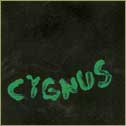 This is a degenerate two guitar record that sounds like it was dredged from the Mississippi along with rotted bodies and tin can telephones still attached. Sludgy doesn’t even begin to describe the muck that these two guys are playing through. This is avant-garde blues as seen through carburettor syrup and burnt amps.
This is a degenerate two guitar record that sounds like it was dredged from the Mississippi along with rotted bodies and tin can telephones still attached. Sludgy doesn’t even begin to describe the muck that these two guys are playing through. This is avant-garde blues as seen through carburettor syrup and burnt amps.
Hidden away from prying daylight, the music seems happy to both drag the guitar into the Stone Age using it as a trephination tool. From single notes to lazy strums this duo slouch into their fret boards with fingers, bricks and chunks of steel. Even at nearly 14 minutes long “Two” still fails to grasp the guitar by the right end. Starting without any recognisable guitar sourced sounds it soon slips into a beautifully removed collection of noises. One player makes the six strings whistle in the dark while the other instrument is cajoled into grumbling like an ale-sodden park bench sleeper.
From a reverberating tinny marble scratch both guitars puff up to harangue each other like jealous siblings, both through the instruments and (what sounds like) shitty walkie-talkies. There are a couple of moments on this five track CD-R that Cygnus seem on the verge of resembling a skinny pocked little thing. The music turns inward after the night’s gone sour and the speed’s been cut with flour, these sounds seem to reach for a coherent majesty beyond their reach. Slipping into some gorgeously lost Cure demo guitar styled playing, their note play coming out with a chiming edge of discordance. They ramble up and over the concern for melody.
Clasped in a paint blobbed jewel case that reeks of spray-paint, this looks as fucked as it sounds. Unlike a lot of the exploratory noisy end of solo guitar gurgling, no bong is required to get into this. While Cygnus definitely have their shit untogether, it’s in a good way.
samples:
Read More
- Administrator
- Albums and Singles
 Available as two vinyl LPs or as this one CD these four solo guitar pieces range in length from around 16 to 20 minutes. On his favored Breedlove 12 string, Cam Deas plays guitar like ringing a (Tibetan) bell and with an intimate intensity that is by turns wild, meditative, melodic and transporting. Within an extended structure he rubs and thrashes the strings into an extraordinary, calm, deliberate, fluttering frenzy.
Available as two vinyl LPs or as this one CD these four solo guitar pieces range in length from around 16 to 20 minutes. On his favored Breedlove 12 string, Cam Deas plays guitar like ringing a (Tibetan) bell and with an intimate intensity that is by turns wild, meditative, melodic and transporting. Within an extended structure he rubs and thrashes the strings into an extraordinary, calm, deliberate, fluttering frenzy.
Quadtych was recorded last December at London’s Roundhouse but Deas had been working on several sections for months. This, and his knowledge of the history of guitar improvisation, gives the music its own definite sense of geography and time. This structure allows it to avoid sounding messy or self-indulgent. Instead, Deas conjures sounds which seem familiar and deliberate (in pace and in the sense that he knows exactly what he doing).
Cam Deas’ style and technique allows for his intellect and emotion to be fully expressed. He hammers and pulls strings, scrapes them like he’s polishing a magic lamp, tweaks behind the nut, allows some notes to resound slowly into silence and pulverizes others with cascading repetition. Its a very tactile experience. Indeed, after listening to the agonizingly protracted rubbing on "Part One," it was touch and go whether I'd make it through this review without using the word "clitoris."
It is pleasing to hear him use a rolling intensity reminiscent of the sheer bombastic volume of Leadbelly and to spot Eastern-influenced textures which echo Robbie Basho. Deas' work may have traces of Bailey's spluttering abstraction and a very faint whiff of Fahey's more embroidered approach but he seems genuinely to be an artist on a journey deep into unique territory. It is a landscape both spacious and densely tangled; maybe similar to the depiction of a forest glade on the relaxing blue-on-blue cover artwork by Jake Blanchard. These sounds conjured in me personal feelings and wider notions of folk memory, the mythology of the forest, ancient beliefs, the survival of superstition, and the comforting inevitability in seasonal repetition.
Initially, I felt a little disappointed that the four pieces on Quadtych have no titles beyond being numbered. But this allows for anyone to enjoy their range and variation in a pure sense and to interpret them according to personal response. Thus, I named the four: "There is no coincidence," "Reflexes/Chinese Blouse," "Floresta da Tijuca," and "Time Rides In A Horse." Perhaps I’m barking up the wrong tree but feel safe to predict that no-one who gets through this album will be calling any of the tracks "Bloke Fiddling About With Wood (And Wires)."
samples:
 
Read More
- Administrator
- Albums and Singles
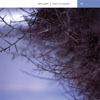
While the five distinct works that comprise this album have different constructs and varying sound sources, the still, subtle sounds and attention to detail is a constant throughout, weaving together into one consistent document.
The first three pieces are more traditional, compositionally speaking, being fully scored and performed by other artists."Objects in Stillness" is a perfect title for the frozen, but not static sounds that are created via bassoon, viola, guitar and percussion, along with four sine tones.The high pitched sine tones carry most of the work, not quite shrill enough to be grating but definitely on the higher end of the spectrum.Slow, long passages of bassoon drone can be heard, counterbalanced by the infrequent, single chiming guitar note.
"A Radiance Scored with Shadow" draws from a drastically different suite of instruments:amplified paper, bass drum, compressed air, and bowed vibraphone.Even with this far less conventional set of instruments, Cluett creates a similar world of sparse, quiet ringing and subtle studies of sound.The paper sounds give a rougher, more chaotic feel, but only in comparison to the other pieces.In any other context, there is still an intense level fo restraint throughout:even as the piece reaches a near-climax of sound and dynamics towards the end, it is quickly reeled back in.
Of the two longer pieces, "Doleros (Audio Tourism at Ringing Rocks)" is perhaps the most distinct.Documenting an installation at a Brooklyn art gallery, Cluett uses construction materials in a very different context.Rather than just the spacious, arid passages of sound from before, here there is a layer of clinking little bits of sound, panned around the entire piece, creating an almost rhythmic underpinning.Below that, a humming drone expands, changing ever so slowly.
The final work, "Untitled (Objects of Memory)," is a long live performance.Utilizing different forms of existing sounds, from feedback to tape players and computers, Cluett is working more towards the chaotic end of the spectrum.While it has the same dreamy, slow motion vibe of the other works, there is a notable sense of urgency with a more forceful approach.While it is mostly a meditative work of tones, there exists the presence of instability via warbling sounds and rattling textures, giving a more dramatic flair to the performance.
Objects of Memory is one of those contradictory works that sounds icy and still on the surface, but upon closer inspection is a much more diverse and varied set of works.Even through all of the different compositional modalities that Cluett employs, his attention to detail and structure is never forgotten, and the result is a challenging, but definitely rewarding piece of sound art.
samples:
 
Read More
- Administrator
- Albums and Singles
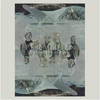 With its "fuck you" attitude to any sort of musical or genre conventions and raw, broken four track analog aesthetic, this Ohio duo’s work recalls other artists, but sounds like no one else at all.
With its "fuck you" attitude to any sort of musical or genre conventions and raw, broken four track analog aesthetic, this Ohio duo’s work recalls other artists, but sounds like no one else at all.
Tracks like "Group Birth" hover closer to the world of harsh noise via high frequency alert tones and maxed out rhythms, and "No Other" uses sloppy rhythms and overly distorted synths with megaphone shouted vocals.It’s not the full on endurance test of a Merzbow record, but it’s definitely more abrasive than some of the other songs here.Even though "Sewer Animals" opens with some obvious guitar, the percussive playing style of it and growling noises are anything but musical.
"Red Man's Vietnam" feels like some sort of black metal and electronica bastard hybrid, with the slowed down and distorted demon voices and rudimentary synth blurps, but paired with 8 bit video game music and guttural, destroyed static bursts."No Us" is cut from a similar cloth, but with toy keyboards and a rattling garage-door spring bass line."Salmonella Bunker Blues" also allows some metal to be heard, pushed on by a terse, punchy drum machine and echoed, otherworldly vocals.
While there's a lot of over-driven noise and feedback to be heard, there also is a fair helping of music that sneaks in.The analog drum machine bits on the title track push the otherwise everything in the red noise vibe into something entirely different.In other circumstances it is even more pronounced:even with the loose, rattling metal string scrapes of "Next One," the vocals end up making the song into some bizarre, shit-faced take on folk music."Keep Searching" also allots more breathing room, but with the overt guitars and sweeping, dramatic flourishes, it takes on a different vibe entirely.
I did feel a shared vibe with Wolf Eyes in Providien's ramshackle, home-taped noise and musical outbursts, but the two projects are really quite different.There is more of a sense of musicality on Followed by a Wraith, even though its often obscured by maxed out volume levels or the paring of elements that are, on the surface, contradictory.Even with the darkness that pervades a lot of these songs, it’s still a hell of a lot of fun.
samples:
 
Read More
- Administrator
- Albums and Singles
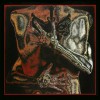 Peat Bog—surprisingly not a nom de plume—is a frequent Nurse with Wound contributor, playing with Stapleton's Inflatable Sideshow on Rock 'n Roll Station, An Awkward Pause and other NWW classics. On his own, Bog records as Earthmonkey. His third full-length (and first in four years) is a monstrous double album that finds him in top form, assured and comfortable in his own skin.
Peat Bog—surprisingly not a nom de plume—is a frequent Nurse with Wound contributor, playing with Stapleton's Inflatable Sideshow on Rock 'n Roll Station, An Awkward Pause and other NWW classics. On his own, Bog records as Earthmonkey. His third full-length (and first in four years) is a monstrous double album that finds him in top form, assured and comfortable in his own skin.
Nurse with Wound aficionados should recall that Steven Stapleton produced Earthmonkey's first album, Audiosapien, nearly a decade ago. That's not the case here—Alms of Morpheus is entirely self-produced by Peat Bog, without Stapleton in earshot (though his influence is felt in places). Bog's few outside collaborators are generally identified by first names in the liner notes, lending their appearances a sense of anonymity. In every practical sense, then, this is a full-fledged Peat Bog solo work. If he was ever perceived to be in Stapleton's shadow, Alms should reverse that misconception; its peaks are as powerful as Stapleton's best work. That said, Earthmonkey shouldn't necessarily be considered alongside NWW at all—this is a damn fine collection of songs in its own right.
I'll be the first to admit that Alms of Morpheus is a daunting listen: nineteen sprawling tracks packed onto two discs, settling in at well over two and a half hours. Luckily, the length suits Bog's songwriting. He has a knack for letting his songs stretch out and develop fully; there's plenty of breathing room, and nothing ends too soon. The opener, "Scene not Herd," sets the pace for Alms—its danceable nature and foregrounded melody is akin to Underworld in a parallel universe, perhaps if Karl Hyde wrote on hallucinogens. The song places its emphasis squarely on the rhythm, by the way, which is important. At its core, Alms is a beat-driven album, its best moments anchored by pulsing, life-affirming rhythms full of precision and power, often as danceable as a Chemical Brothers A-side.
Alms of Morpheus is well-sequenced, but given its length, it can be a lot to ingest in one sitting. Luckily, it functions well as a buffet of sorts, with individual songs heard piecemeal—an ideal format for the iPod Shuffle generation. There is truly something here for everyone, whether the paranoid vocal loop in "I'm Just a Naked Man Screaming Here" beneath a maelstrom of guitar psychedelia straight out of Julian Cope's record collection, the Middle Eastern-tinged guitar and Kosmiche vibes of "Glespie's Rheum," or the rollicking bounce of, well, "Bounce" that reprises the melody of "Scene not Herd" in fine fashion. (And this is only the first half.)
Disc two kicks off with perhaps my favorite song of the bunch: "Night Blossom," a patiently unfurling web of gentle, Vini Reilly-esque guitar playing punctuated by a searing solo. From there, Alms spirals back into a maze of head-spinning guitar, Krautrock rhythms, carefully deployed samples and manipulated organic sounds. It's certainly of a piece with the album's first disc, give or take a few distinct tricks: the blissful, fiery guitar work of "Mothership" that recalls "Maggot Brain" for 21st-century noiseniks, for example. Toward the end, there are three freewheeling jams credited to Earthmonkey's Boom Band, including the aptly titled "Hed Phood 4 Phat People." (If there's one thing that can be said of Earthmonkey in general, it's that Peat Bog knows his audience.)
The lifeblood of the record is "Alms of Morpheus," the longest and most ambitious piece on an album with no shortage of long, ambitious pieces. At 20 minutes, "Alms" is no less overblown and indulgent than Prince William and Miss Catherine Middleton's royal wedding, but comes at a fraction of the cost—and, by the way, is a hell of a lot more fascinating. Naturally, it doesn't appear until two hours into the album. For those who make it this deep into Alms of Morpheus, the title track is a worthy reward, an abrasive encore for the fans who stick around 'til the end.
Samples:
Read More
- Administrator
- Albums and Singles
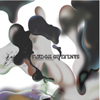 This is my first exposure to Rishaug's work, but he has maintained a somewhat high profile in Scandinavia though his work with the improv ensemble ARM. On this, his third solo album and first for Dekorder, he seems to draw a lot of his inspiration from the laptop-based drone/ambient of Mille Plateau/Rittornel's golden age. He's admittedly a bit late for that particular party, but he seems to be endearingly and stubbornly well-aware of that. Fortunately, I am quite fond of that particular period in recent music history, so these deep and thoughtfully constructed soundscapes frequently hit the mark for me, despite the fact that they don't bring anything particularly "new" to the form. Good music is good music.
This is my first exposure to Rishaug's work, but he has maintained a somewhat high profile in Scandinavia though his work with the improv ensemble ARM. On this, his third solo album and first for Dekorder, he seems to draw a lot of his inspiration from the laptop-based drone/ambient of Mille Plateau/Rittornel's golden age. He's admittedly a bit late for that particular party, but he seems to be endearingly and stubbornly well-aware of that. Fortunately, I am quite fond of that particular period in recent music history, so these deep and thoughtfully constructed soundscapes frequently hit the mark for me, despite the fact that they don't bring anything particularly "new" to the form. Good music is good music.
One curious thing about this album is that it was allegedly influenced by minimalist classical composers like Steve Reich and Terry Riley, but it doesn't seem like that influence manifests itself in any overt way.Maybe it is an entirely philosophical inspiration, as Harold Budd seems like a much more plausible kindred spirit stylistically: Rishaug certainly betrays a love for rippling beds of heavily reverbed piano.Alexander is a bit more varied in his instrumental arsenal than Budd though, as the six untitled pieces here also incorporate organ, guitar, field recordings, and "a nervous radio."And a computer, of course, which is where the Mille Plateaux connection comes in.Regardless of which instrument a piece is built around, however, they all tend to follow a fairly unwavering trajectory.There is definitely an archetypal "Alexander Rishaug sound," as he processes everything into warm, blurred homogeny, then slowly escalates from a fragile and minimal introduction into immersive and densely layered, blissed-out crescendo.He generally leaves his field recordings relatively unmanipulated, which I deem to be a wise move.Slow-moving oceans of drifting and shimmering sound can get pretty tedious and one-dimensional fairly quickly, so the occasional intrusion of sharp, clear sounds (frogs, footsteps,a fire) serves both to add a sense of place and mystery and provide a nice textural counterbalance to the amorphously enveloping music beneath.Despite covering such specific territory, however, Rishaug manages to throw in some inspired twists every now and then.I was especially struck by the unpredictable, diffuse twinkling of the second piece, as well as its unexpected plunge into darker waters near the end.
The two most successful pieces are the second and the sixth.While the superficial content is quite similar to everything else on the album in both cases, both pieces are simply assembled and executed brilliantly.The second piece is built around a darkly throbbing organ motif intermittenly augmented by subtle crackling and hissing.Gradually, a single quavering organ chord emerges to dominate the piece and some glitchy, skipping laptoppery appears, but the slow pulse never stops and the underlying chords provide a supremely haunted mood throughout.The sixth piece is less immediately gripping, but its waxing and waning tones intertwine quite hypnotically.Also, it is pretty long.A good rule of thumb seems to be that if Rishaug grants a piece more than a five-minute running time, it will probably be something pretty amazing.The only misfire is the fourth piece, which sounds like Alexander left a microphone running as he did some work around the house, then collaged the recordings.That became doubly perplexing when I learned that Shadow of Events took five years to finish, as I don't see how spending that long with this material could have failed to alert him to that song's shortcomings in relation to everything surrounding it.Still, five out of six is not bad at all, and Rishaug at his best is a formidable talent.
Samples:
 
Read More
- Administrator
- Albums and Singles
 Marc Hellner's long-running synthpop/art ensemble is back from their lengthy hiatus and they have made some significant changes. For one, new vocalist Chanel Pease has joined the fold. Also, Hellner has chosen to largely or completely eschew software use, opting to whole-heartedly embrace the fabled and elusive analog sound that I hear so much about. Regardless of how it was made, Charade is Gold boasts some great singles that easily hold their own against the rest of current wave of synthpop devotees.
Marc Hellner's long-running synthpop/art ensemble is back from their lengthy hiatus and they have made some significant changes. For one, new vocalist Chanel Pease has joined the fold. Also, Hellner has chosen to largely or completely eschew software use, opting to whole-heartedly embrace the fabled and elusive analog sound that I hear so much about. Regardless of how it was made, Charade is Gold boasts some great singles that easily hold their own against the rest of current wave of synthpop devotees.
Given his recent purist bent regarding synthpop's instrumentation, it is no surprise that Hellner also unfailingly nails all of the genre's tropes: politely danceable mid-paced drum machine beats, throbbing synth bass lines, delay-heavy guitars, warm washes and omnipresent shimmer, and a healthy devotion to packing his songs with hooks.Still, this album doesn't sound as completely rooted in the '80s as it might have.The biggest difference, to my ears, is that the vocals are understated and introspective in a way that did not come into vogue until much later.Despite the instrumentation and probable intent, these songs share much more aesthetically with Sarah/Shinkansen bands like Trembling Blue Stars than, say, Soft Cell.That is both a good thing and a bad thing.The good part is that Pulseprogramming completely avoid all of the ostentation and terrible lyrics that typified much of the genre's extroverted salad days.The downside, unfortunately, is that Marc and Chanel both lack the presence and oversized personality necessary to make the leap from "pretty good synthpop band" to "great synthpop band."Which is, of course, a bit frustrating and unfair: even though Pulseprogramming essentially do everything right and have an impressive talent for songwriting, shy and hushed songs will never be as exciting for me as more personality-driven projects (The Knife, Cold Cave, etc.) even if the songs are at the same level (or better).Marc Hellner is just not an in-your-face guy.
That is not only flaw here though, as Pulseprogramming are a bit too fixated on one type of song: everything here has roughly the same pace and the mood seems limited to the very small range between wistful and melancholy.Consequently, the nine songs blur together in an album-sized dose.Of course, album-sized doses may be largely anathema to the genre, as I can't think of many times when I have wanted to experience 40 straight minutes of The Human League or OMD.
Synthpop is a singles game and synthpop albums are meant to be harvested for their best moments.Charade is Gold, for its part, offers three killers in a row near the end of the album."Island Answer Anywhere" is one of the most bouyant and elegantly melodic pieces on the album, but also features some beautifully ghostly, glistening sounds in background."You Mean by Magic," on the other hand, combines Pease's appealing breathy vocals with fun bloopy synth riffing and lush swells that would have made Disintegration-era Robert Smith a bit jealous.The oddly titled "So Right Words Strike Me" is my clear favorite, however, as Marc keeps tossing out one great idea after another (haunting synth washes, burbling hooks, quirky percussion) until he has assembled a small pop masterpiece of textural variety and inspired arrangement. The rest of the album isn't bad by any means, but a lot of it sounds a bit listless and forgettable compared to such striking highlights (though the Pease-centric first single "First They Fire" is likeable, if a bit slight).
When Hellner counterbalances his melancholia and tendency towards understatement with the right amount of energy and catchiness, the results are pretty damn infectious.
Samples:
 
Read More


